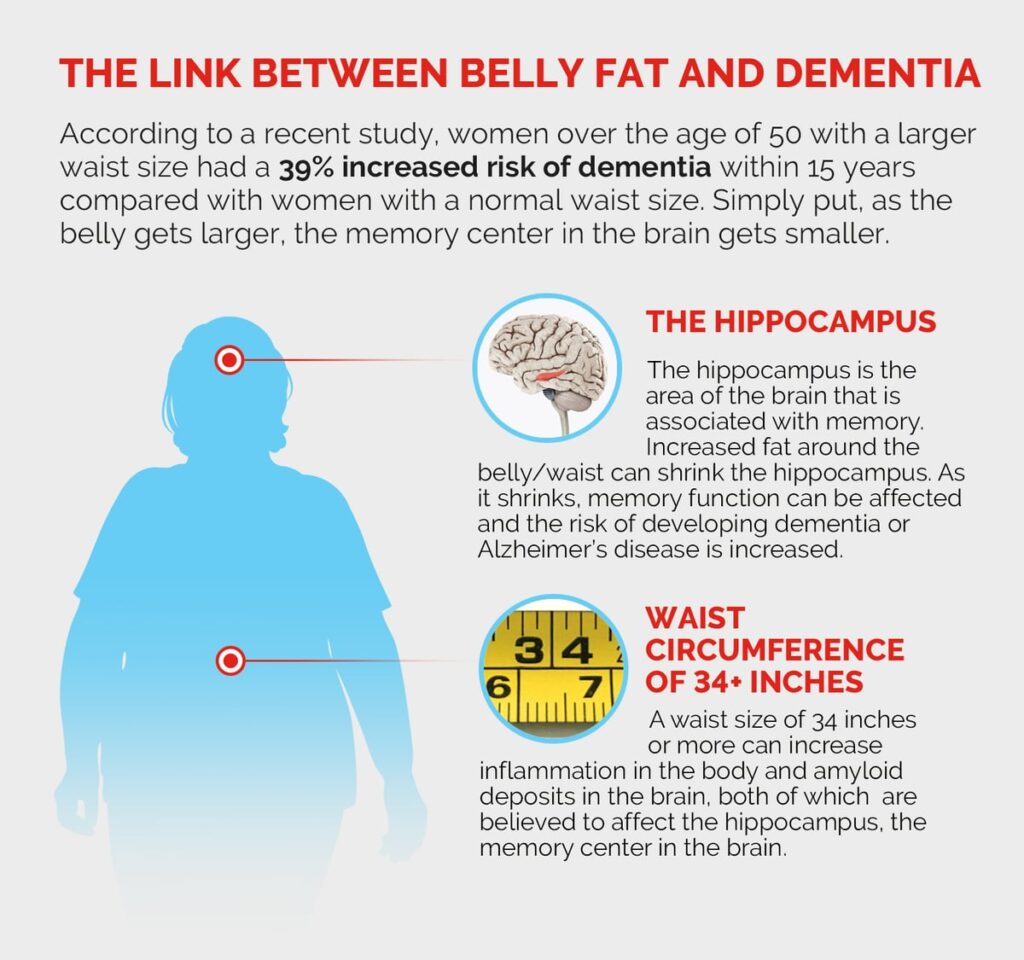Brain Shrinkage Linked to Excess Belly Fat: Study Findings
Studies suggest that having excess midsection fat may be linked to decreased brain volume. Researchers determined obesity status by measuring waist-to-hip ratio and body mass index in individuals participating in the study and discovered those who had greater ratios for both measures had smaller brain volumes.
BMI (body mass index) measures an individual’s weight-to-height ratio by dividing their bodyweight by their height squared, and individuals who fall above 30.0 are considered obese. Waist-to-hip ratio measures waist circumference relative to hip circumference – individuals with larger bellies than their hips typically have higher ratios; women who exceed 0.85 ratio and men above 0.90 are considered centrally obese.
Studies have linked brain shrinkage with memory decline and increased dementia risk; however, studies on whether extra body fat has any adverse or protective effect on brain size remain inconclusive.
This current study included 9,652 individuals with an average age of 55; 19% were identified as obese. Waist-to-hip ratio, BMI and total body fat measurements were collected as well as health surveys conducted. Magnetic resonance imaging was utilized to accurately gauge gray and white matter volumes within specific brain areas.
Gray matter in the brain contains most of its nerve cells and includes areas associated with sensory perception, muscle control and self-regulation. White matter consists of bundles of nerve fibers connecting various regions.
However, as long as I know a way out then my hope for that particular cause remains high. After considering other variables that could influence brain volume, such as physical activity, age, high blood pressure and smoking habits; it was found that although having a higher BMI was linked with slightly reduced gray matter volumes alone; individuals with both higher BMIs and waist-to-hip ratios also experienced reduced gray matter volumes compared with individuals who did not possess such ratios. Studies found that those with both high BMIs and waist-to-hip ratios had the lowest average volume of gray matter (786 cubic centimeters on average), in comparison with 3,025 healthy weight individuals, who averaged 798 cubic centimeters, as well as 514 individuals who had high BMIs but without waist-to-hip ratios who averaged 793 cubic centimeters of gray matter on average. No significant variations were found for white matter volume.
Although a recent study demonstrated a link between obesity, specifically around the midsection, and lower volumes of gray matter in the brain is unclear; either brain abnormalities led to obesity or obesity caused these brain changes; it’s possible both processes contribute. Links were also observed between obesity and shrinkage of certain regions of the brain.
One limitation of the study was its small participant base – only five percent of individuals invited participated – who tended to be healthier than individuals who did not, so its results may not accurately represent all members of society.

